7 Tips to Help Participants with Long-Term Saving
7 Tips to Help Participants with Long-Term Saving
Improving retirement outcomes means keeping participants focused on the long-term.
Helping employees focus on long-term savings is not easy, especially during uncertain times. Still, employers have seen success. Despite stubborn inflation, a recent survey reports that plan participation and saving rates have reached all-time highs.[1]
This is great news, but it’s only part of the solution. Many employees join a retirement plan without fully understanding its purpose. Without such an understanding, they may struggle to stay on track during market volatility, save less than they need, or even cash out early. On the other hand, employees who feel financially secure are 74% more likely to stay with their employer and tend to be more productive.[2]
To get the most out of your benefits package, regular communication and targeted education are key. After all, your retirement plan should inspire a loyal and engaged workforce.
Raise awareness about the benefits of long-term savings
Sharing the value of long-term saving is a game changer. Regular communication helps employees feel informed. This can lead to higher participation and greater satisfaction with their benefits.[3]
Want to boost awareness? Try these simple strategies:
- Hosting education sessions. In-person or virtual sessions are a great way to engage employees. Use these sessions to explain the benefits of saving through the plan. Highlight features like tax savings, compound interest, and building a more secure financial future. Also, address common concerns like investment risks, market volatility, and setting retirement goals.
- Workplace communications. Regular communication helps keep savings top of mind. Effective communications may include monthly emails, articles in a company newsletter, or posters in public areas. Adding charts, pictures, or videos can make the message clearer and more engaging.
Retirement saving topics that resonate
No matter how you choose to communicate with employees, the message matters most. Think carefully about the information you’ll share. Every plan has distinct demographics, and each group has specific interests. A few education and communications themes to consider this year include:
- Start saving early. One of the most important ways employees can improve their retirement readiness is by saving enough along the way. That means starting early. Charts are a great way to show just how big a difference it can make.
- Make the most of your peak earnings years. For many employees, peak earning years (usually, ages 40 to 60) are an ideal time to focus on retirement savings. With higher incomes, they have the opportunity to save more and work toward their financial goals. They might consider increasing plan deferrals, making after-tax contributions (if available), or saving in taxable accounts. Taking steps during this time can help them better prepare for the future.
- Put the power of compound interest to work. Compounding happens when the interest you earn starts earning interest too. It can be a powerful tool for participants who may not be able to save as much as they would like to save in the plan.
- Stay calm when markets are volatile. Keeping a long-term perspective when markets are volatile is not easy. Trading activity in retirement plans tends to rise when markets fall. For example, in August 2024, U.S. stocks experienced a brief downturn, including the worst performance day in nearly two years.[4] Trading activity in 401(k) plans rose to eight times its normal level. Participants fled to safety, pulling money from stock funds and moving it into stable value bonds, and money market funds.[5] Remind plan participants that stock market volatility is normal. Stocks move higher and lower; however, over the long term, historically, they have trended higher.
- Boost savings with catch-up contributions. Make sure employees understand how much they can save in your workplace retirement plan. In 2025, the limit for traditional and Roth contributions to 401(k) plans is $23,500. However, older participants who save the maximum amount can make additional catch-up contributions. In 2025, catch-up contributions are $7,500 for participants who are ages 50 to 59 or 64 or older. Participants ages 60 to 63 can make “super” catch-up contributions this year of $11,250.[6]
Looking for resources to support employee education and communication? Contact us—we’re here to help! We can help you create campaigns that support long-term success for your workforce.

